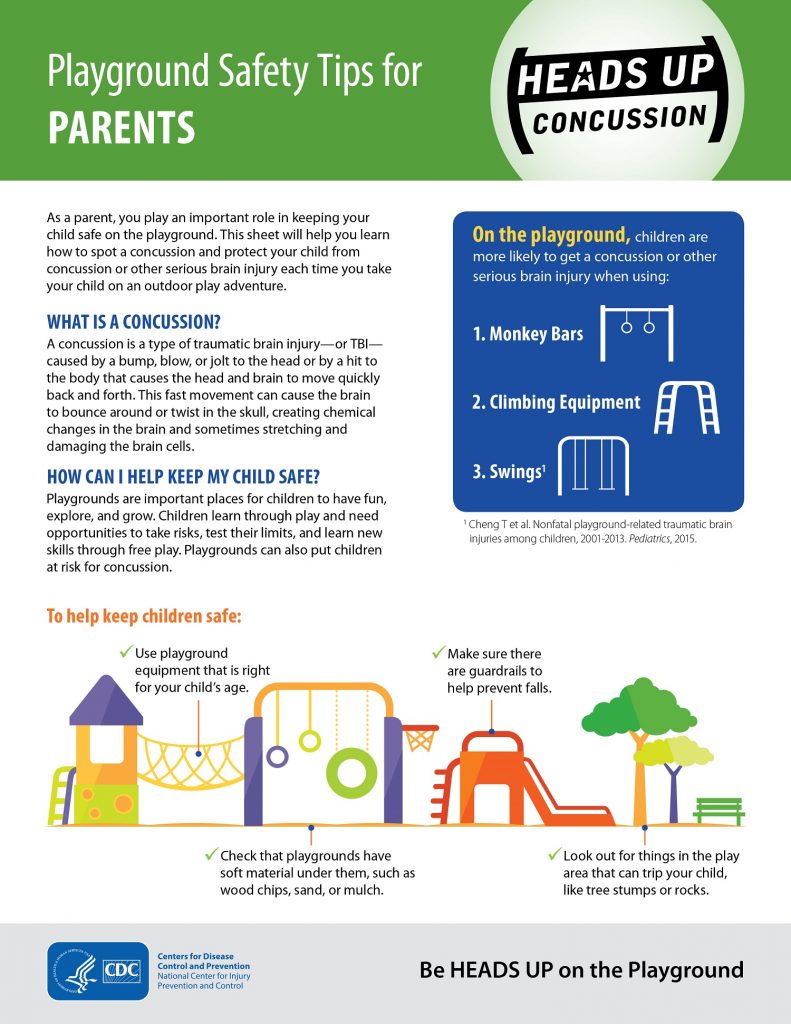April 7, 2020 by John Fernandez
Playground Safety: Concussion Rates Climbing for Kids (With Infographic)

Playground safety has emerged as a hot summer topic, especially with the recent news that concussion rates are climbing for kids.
“No playground or swimming pool is safe without adult supervision,” says Francisco A. Medina, M.D., chief medical director of pediatric emergency services at Homestead Hospital. “Adult supervision has to take place before, during and after playground visits.”
Diagnoses of concussions have more than doubled for general population and more than tripled for kids, ages 10 to 14, during the seven-year period from 2007 to 2014. That’s according to a study that tracked health insurance claims for nearly 9 million Americans. The rate of concussions diagnoses is also higher for younger children, according to research.
“The overall rate of emergency department visits for playground-related traumatic brain injuries has significantly increased in recent years (2005-2013),” according to a report from the U.S. Centers for Disease Control and Prevention (CDC).
The spike in diagnoses of concussions and brain injuries may be driven by several factors, including greater education and understanding about head injuries. Other factors may include distracted or inattentive caregivers due to the increased popularity of mobile devices or other factors, according to medical and public health authorities.
Of course, playgrounds provide healthy opportunities for kids to jump, run and get great physical activity. To reduce risk, Dr. Medina recommends these five safety tips:
1. Plan ahead: “Before you go to a playground or park, check the conditions,” Dr. Medina says. Inspect the equipment and look for trouble spots, including nails, nicked or scarred surfaces and other defects that could represent potential dangers.
2. Look for age-appropriate equipment and toys: A lot of parks and playgrounds have fancy bells and whistles. “But make sure the activities are age-appropriate,” Dr. Medina says. It’s dangerous, he says, for smaller children to play on climbing equipment and other activity centers that are designed for older children. Severe injuries occur when children climb to greater distances from the surface.
3. Know the range of possible injuries: Common playground injuries, include sprained ankles, fractured bones, concussions and cuts.
4. Pay attention: “It doesn’t take more than 10 seconds for a child to become invisible to your eyes,” Dr. Medina says. “Supervision is the key. Whoever is taking care of the child has to be constantly watching and aware.”
5. Select adults to supervise: Don’t delegate playground safety to an older child or older siblings.
Minor injuries can be treated in the pediatrician’s office, a primary care or family medical office.
“The family doctor is a good option if there is no loss of consciousness or if the accident involved a minor scrape,” Dr. Medina said.
But caregivers should call fire rescue or 911 if a playground mishap or fall leads to any sort of deformity of a limb, a severe cut, head trauma, loss of consciousness, unusual behavior, seizures, suffocations or other signs of distress.
To reduce the risk of accident, stay alert, Dr. Medina says. “Never take your eye off the child. And remember: Anything could distract you— a cellphone conversation, food or an airplane flying overhead.”
For additional information, please see the infographic below or the CDC’s resource section on kids’ concussions.

top stories












There are no comments